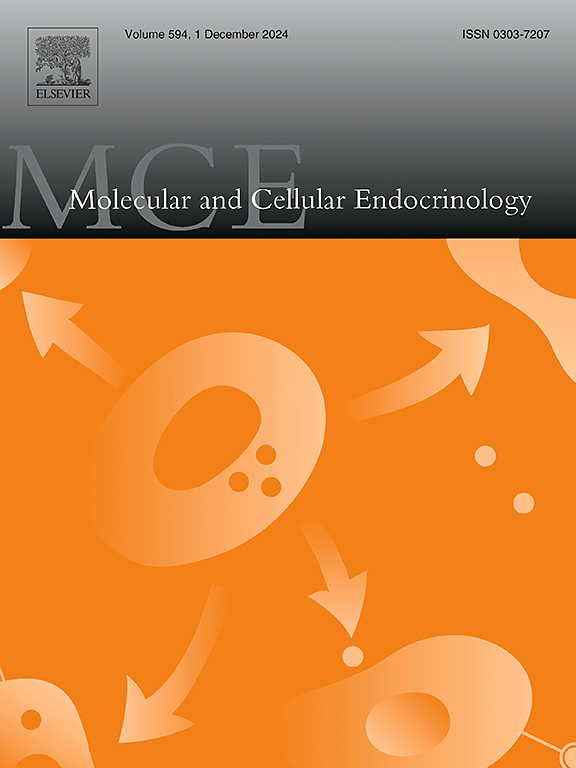发育规划:产前睾酮和产前双酚a处理对母羊肝脏甲基组的不同影响。
IF 3.6
3区 医学
Q2 CELL BIOLOGY
引用次数: 0
摘要
类固醇激素是怀孕和胎儿发育不可或缺的一部分,调节代谢、炎症和免疫反应等过程。过量的产前类固醇暴露,通过生活方式选择或环境化学物质,可导致后代代谢功能障碍。这项研究的重点是暴露于睾酮(T)和双酚A (BPA)如何影响肝脏的DNA甲基组,甲基组是影响长期健康的表观基因组的关键组成部分。这项研究以萨福克羊为研究对象,分为两组:一组暴露于产前的t,另一组暴露于产前的bpa。亚硫酸氢盐全基因组测序用于绘制超过2200万个CpG位点的DNA甲基化图谱。p值为4且组间甲基化程度相差至少5%的区域被认为是差异甲基化。结果表明,由于两种治疗,肝脏组织中的甲基化存在显著差异,产前t引起的独特表观遗传修饰与产前bpa诱导的修饰不同。具体来说,产前t治疗导致53个差异甲基化区域(DMRs),其中31个位于基因区域,包括外显子。产前bpa暴露导致32例dmr,其中22例与基因区域有关。这些修饰与控制脂质和葡萄糖代谢的基因有关,可能是观察到的代谢中断(如胰岛素抵抗和血脂异常)的基础。通路分析显示,受产前t基因差异甲基化的基因参与细胞组织,而受产前bpa影响的基因则富集于信号调节通路。研究结果强调了产前暴露于类固醇过量和类固醇模拟物如何影响表观遗传景观,促进代谢疾病编程。本文章由计算机程序翻译,如有差异,请以英文原文为准。
Developmental programming: Differing impact of prenatal testosterone and prenatal bisphenol-A -treatment on hepatic methylome in female sheep
Steroid hormones are integral to pregnancy and fetal development, regulating processes such as metabolism, inflammation, and immune responses. Excessive prenatal steroid exposure, through lifestyle choices or environmental chemicals, can lead to metabolic dysfunctions in offspring. The research focuses on how exposure to testosterone (T) and bisphenol A (BPA) affects the liver's DNA methylome, a key component of the epigenome influencing long-term health. Using Suffolk sheep, the study involved two cohorts: one exposed to prenatal-T and the other to prenatal-BPA. Whole genome bisulfite sequencing was employed to map DNA methylation across over 22 million CpG sites. Regions with p-value<10−4 and a magnitude of difference of at least 5 % methylation between groups were considered differentially methylated. Results demonstrated substantial differential methylation in the liver tissues due to both treatments, with prenatal-T causing unique epigenetic modifications distinct from those induced by prenatal-BPA. Specifically, prenatal-T treatment resulted in 53 differentially methylated regions (DMRs), of which 31 were located in gene regions, including exons. Prenatal-BPA exposure led to 32 DMRs, with 22 associated with gene regions. These modifications were associated with genes governing lipid and glucose metabolism, potentially underlying the observed metabolic disruptions such as insulin resistance and dyslipidemia. Pathway analysis revealed that genes differentially methylated due to prenatal-T were involved in cellular organization, while those affected by prenatal-BPA were enriched in signal regulation pathways. The findings underscore how prenatal exposure to steroid excess and steroid-mimics influence epigenetic landscapes, contributing to metabolic disease programming.
求助全文
通过发布文献求助,成功后即可免费获取论文全文。
去求助
来源期刊

Molecular and Cellular Endocrinology
医学-内分泌学与代谢
CiteScore
9.00
自引率
2.40%
发文量
174
审稿时长
42 days
期刊介绍:
Molecular and Cellular Endocrinology was established in 1974 to meet the demand for integrated publication on all aspects related to the genetic and biochemical effects, synthesis and secretions of extracellular signals (hormones, neurotransmitters, etc.) and to the understanding of cellular regulatory mechanisms involved in hormonal control.
 求助内容:
求助内容: 应助结果提醒方式:
应助结果提醒方式:


